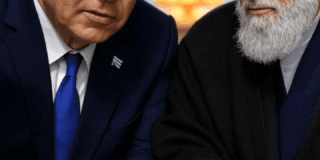
Abstract
The 21st century has ushered in a profound crisis for democratic institutions worldwide, driven by the resurgence of authoritarian strongmen, the rise of populist movements, and the transformative power of media influence. Leaders such as Vladimir Putin, Recep Tayyip Erdo?an, Donald Trump, and Narendra Modi have exploited economic discontent, cultural anxieties, and political disillusionment to undermine judicial independence, suppress media freedom, and erode human rights, often with significant public support. Political corruption, disinformation, and the persecution of minorities have proliferated, amplified by traditional and digital media ecosystems that shape public perception, polarise societies, and enable propaganda. Drawing on historical parallels – most notably the collapse of Germany’s Weimar Republic and the rise of Nazism – this paper provides an in-depth examination of the causes, psychological and sociological drivers, and mechanisms of these interconnected threats. It explores why tyrants and populists succeed, why supporters enable their agendas, how media amplifies their power, and whether societal moral frameworks are too weak to resist. Finally, it proposes comprehensive strategies to safeguard democracy in an era of uncertainty, emphasising the critical role of institutional resilience, civic engagement, and media reform.
Introduction
Since the early 2000s, democratic institutions across the globe have faced unprecedented challenges, marked by the rise of authoritarian “strongmen,” populist movements, and the evolving influence of media. From Putin’s consolidation of power in Russia to Modi’s Hindu nationalist agenda in India, these forces have weakened democratic checks and balances, often with public complicity. Political corruption, disinformation, and the scapegoating of minorities have become hallmarks of this era, fueled by media ecosystems that amplify divisive narratives and enable propaganda. The collapse of Germany’s Weimar Republic (1919–1933) and the ascent of the Nazis remain a paradigmatic case of democratic failure, offering critical lessons for understanding today’s threats. This paper integrates three interconnected phenomena – tyranny, populism, and media influence – to address pressing questions: What drives the rise of tyrants and populists? How does media amplify their power? Why do supporters enable their agendas? Are societal moral values too weak to resist? Through a detailed historical and contemporary analysis, it seeks to illuminate these dynamics and propose robust strategies to protect democracy.
Defining Key Concepts
To analyse these threats, we clarify core concepts:
1. Authoritarianism: A governing system characterised by concentrated power, limited political pluralism, and the suppression of dissent. Authoritarian leaders, such as Putin, prioritise control over democratic norms, often using media to reinforce their dominance.
2. Populism: A “thin ideology” that pits a virtuous “people” against a corrupt “elite,” often vilifying minorities or outsiders. Populist leaders, like Hungary’s Viktor Orbán, claim to embody the people’s will, leveraging media to amplify their message.
3. Tyrants and Charlatans: Tyrants wield absolute power through coercion, while charlatans use deception and charisma to manipulate. Both often adopt populist rhetoric, as seen in Jair Bolsonaro’s Brazil, where media spectacles bolster anti-elite narratives.
4. Media Influence: Encompassing traditional platforms (e.g., television, newspapers) and digital platforms (e.g., social media, websites), media shapes public opinion, fosters democratic discourse, or enables propaganda and disinformation. Its role in democracy is dual-edged, fostering informed citizenship or facilitating authoritarian control.
These phenomena converge in their hostility to democratic checks, reliance on public support, and exploitation of societal vulnerabilities, necessitating a comprehensive analysis.
Causes of the Rise of Tyrants, Populists, and Media Influence
The global surge of authoritarianism, populism, and media’s role in democratic erosion stems from a confluence of economic, cultural, political, and technological factors:
Economic Discontent
1. Globalisation and Inequality: The 2008 Global Financial Crisis exposed the vulnerabilities of globalised economies, marginalising working-class communities in regions like the U.S. Rust Belt, the UK’s post-industrial North, and southern Europe. Leaders like Donald Trump and Brexit campaigners capitalised on these grievances, with media amplifying economic despair through emotive coverage.
2. Austerity and Stagnation: Post-crisis austerity measures in Europe deepened inequality, fueling support for populist parties such as Greece’s Syriza, Spain’s Podemos, and Germany’s Alternative für Deutschland (AfD). Sensationalist media outlets framed political elites as culpable, strengthening anti-establishment narratives.
3. Wealth Disparities: Rising income inequality, as documented by economist Thomas Piketty, has eroded public trust in elites perceived as benefiting disproportionately from global markets. Media coverage of wealth gaps, from tabloids to social media, has driven populist support for figures promising economic justice.
Cultural Anxieties
1. Immigration and Identity: Rapid demographic changes due to immigration have sparked fears of cultural erosion, particularly in Europe. Leaders like Orbán in Hungary and Marine Le Pen in France have exploited these anxieties, with far-right media outlets like Breitbart amplifying xenophobic narratives during events like the 2015 European refugee crisis.
2. Backlash Against Progressivism: Socially conservative groups, alienated by the spread of cosmopolitan values such as secularism and gender equality, have supported leaders like Poland’s Law and Justice Party (PiS) or Modi’s Hindu nationalist Bharatiya Janata Party (BJP). Social media platforms, including X, have become conduits for traditionalist rhetoric, polarising societies.
3. Polarisation: Cultural divides, such as those over religion in Turkey under Erdo?an or race in the U.S. under Trump, have been exacerbated by partisan media, deepening societal cleavages and creating fertile ground for populist and authoritarian appeals.
Political Disillusionment
1. Erosion of Trust: High-profile corruption scandals, such as Brazil’s Lava Jato, South Africa’s state capture under Jacob Zuma, or India’s 2G spectrum scam, have fueled public distrust in democratic institutions. While media exposés are vital for accountability, they often amplify cynicism, paving the way for outsider figures like Bolsonaro or populist movements.
2. Decline of Mainstream Parties: The weakening of centre-left and centre-right parties, such as social democrats in Europe or the Indian National Congress, has created political vacuums filled by populist challengers. Media framing of traditional politicians as out-of-touch has accelerated this shift.
3. Representation Gaps: Many citizens feel unrepresented by technocratic elites, as evidenced by the UK’s Brexit vote or Chile’s 2019 protests against neoliberal policies. Populist leaders, with their media-savvy campaigns, promise direct accountability, as seen in Modi’s extensive use of radio and social media.
Technological and Media Transformation
1. Social Media and Disinformation: Platforms like Twitter, WhatsApp, and Facebook enable leaders to bypass traditional media gatekeepers, spreading propaganda and disinformation. The 2016 Cambridge Analytica scandal demonstrated how data-driven campaigns swayed voters for Trump and Brexit, highlighting social media’s role in electoral manipulation.
2. Echo Chambers: Algorithms reinforce polarised views by curating content that aligns with users’ biases, as seen in India, where Modi’s BJP used WhatsApp to mobilise Hindu nationalist supporters. This dynamic mirrors Nazi Germany’s use of radio to unify audiences around a singular narrative.
3. Decline of Traditional Media: Financial pressures on newspapers and television have reduced investigative journalism, leaving space for sensationalist or state-controlled outlets. Russia’s RT network and China’s Xinhua exemplify state media’s role in shaping global perceptions.
4. Media Suppression: Authoritarian regimes target independent media to silence dissent, as in Turkey, where Erdo?an jailed over 100 journalists post-2016 coup attempt, or the Philippines, where Rodrigo Duterte’s government attacked outlets like Rappler. Populist leaders like Trump further erode trust by labelling media “fake news.”
These factors echo the conditions of the Weimar Republic, where hyperinflation, cultural humiliation after World War I, and distrust in a fragile democracy were amplified by polarised and propaganda-heavy media, enabling Adolf Hitler’s populist and authoritarian rise.
Psychological Drivers of Tyrants, Populists, and Media Influence
The success of authoritarian and populist leaders, amplified by media, stems from psychological and sociological vulnerabilities:
Traits of Leaders
1. Narcissism and Grandiosity: Many leaders exhibit narcissistic personality traits, craving admiration and viewing themselves as saviours. Hitler’s messianic self-image and Trump’s obsession with personal loyalty, projected through media spectacles, exemplify this.
2. Machiavellianism: Leaders like Putin manipulate media narratives to maintain power, as seen in Russia’s state-controlled outlets that portray him as a national protector.
3. Charisma and Authenticity: Populist leaders like Venezuela’s Hugo Chávez or Brazil’s Jair Bolsonaro use media – tweets, rallies, viral videos – to project relatability, bypassing traditional gatekeepers and connecting with alienated supporters.
4. Insecurity and Paranoia: Paradoxically, tyrants like Stalin or Venezuela’s Nicolás Maduro are driven by fears of betrayal, using media to neutralise perceived threats through propaganda or smear campaigns.
Supporter Psychology
1. Need for Certainty: Economic and cultural crises drive demand for simple solutions. Leaders offer clear narratives via media, scapegoating enemies (e.g. immigrants, elites) to provide order, as Hitler did with Jews and communists in Weimar Germany.
2. In-Group/Out-Group Dynamics: Social identity theory explains how media fosters tribalism by defining “the people” against outsiders. Modi’s Hindu nationalist media campaigns unite supporters by framing Muslims as threats, while Orbán’s anti-immigrant rhetoric targets refugees.
3. Cognitive Biases: Confirmation bias, amplified by social media echo chambers, makes supporters susceptible to disinformation. The Brexit campaign’s anti-EU narratives, spread through targeted Facebook ads, capitalised on this.
4. Authoritarian Predispositions: Research by Karen Stenner suggests some individuals favor conformity over diversity, drawn to leaders promising stability through media-driven messaging, as seen in Erdo?an’s Turkey or Putin’s Russia.
Media’s Psychological Impact
1. Emotional Manipulation: Media amplifies fear and anger, key tools for populists and authoritarians. Sensationalist coverage of immigration or crime, as in Fox News’ U.S. broadcasts or India’s Republic TV, drives support for strongmen.
2. Framing and Priming: Media shapes perceptions, as in Russia, where state media primes loyalty by portraying Putin as a national savior. Similarly, China’s state-run media frames Xi Jinping as indispensable.
3. Desensitisation: Constant exposure to divisive rhetoric normalises extremism, as seen in Myanmar, where Facebook posts incited violence against Rohingya Muslims, or in the U.S., where X posts amplify far-right conspiracies.
Gender Dynamics
The predominance of male leaders reflects patriarchal socialisation, where men are encouraged to prioritise dominance. Media portrayals of aggressive leadership reinforce the “strongman” archetype. While women like Le Pen or Germany’s Alice Weidel adopt similar media strategies, they remain exceptions in a male-dominated landscape.
Mechanisms of Power and Media’s Role
Tyrants and populists, amplified by media, entrench power through predictable strategies.
Undermining Democratic Institutions
1. Judiciary: Authoritarian and populist governments pack courts with loyalists to neutralise checks. Poland’s PiS and Hungary’s Orbán have curtailed judicial independence, with media justifying these moves as anti-elite reforms. In Turkey, Erdo?an’s purges post-2016 coup attempt crippled the judiciary, framed as national security.
2. Media Suppression: Regimes target independent outlets to silence dissent. Venezuela’s Maduro controls state media, while Duterte’s Philippines attacked Rappler. Populist leaders like Trump erode trust by labelling media “fake news,” a tactic echoed by Bolsonaro and Modi.
3. Elections: Electoral manipulation ensures dominance, as in Belarus under Alexander Lukashenko or Venezuela under Maduro. Controlled media legitimises these processes, portraying opposition as traitorous.
Polarisation and Scapegoating
1. Media deepens societal divides to maintain loyalty. In India, Modi’s BJP uses television and social media to frame Muslims as threats, echoing Nazi propaganda’s scapegoating of Jews. In the U.S., outlets like Breitbart amplify anti-immigrant narratives, fuelling Trump’s base.
2. Minorities are scapegoated to deflect economic or governance failures, as in Myanmar’s anti-Rohingya campaigns or Orbán’s anti-refugee rhetoric.
Patronage and Coercion
1. Loyalists are rewarded with power, wealth, or media influence, as in Russia, where oligarchs control key outlets, or Venezuela, where Maduro sustains military loyalty through oil contracts.
2. Dissenters face repression, amplified by media smear campaigns. In the Philippines, Duterte’s government targeted journalists, while Erdo?an’s Turkey jailed academics and reporters.
Propaganda and Disinformation
1. Digital platforms enable rapid propaganda spread. Bolsonaro’s 2018 WhatsApp campaigns spread disinformation to millions, while Russia’s troll farms influence global elections, mirroring Nazi propaganda minister Joseph Goebbels’ use of radio and film.
2. Co-opted traditional media reinforces authoritarian narratives. China’s Xinhua and Russia’s RT promote state agendas, while India’s Republic TV aligns with Modi’s BJP.
The Weimar Republic’s collapse illustrates these tactics: Hitler exploited Article 48 to bypass parliament, silenced opposition through the Reichstag Fire Decree, and used radio and newspapers to cement his cult of personality, demonstrating media’s pivotal role in democratic erosion.
Media Influence on Democracy: A Dual-Edged Sword
Media’s role in democracy is complex, serving as both a pillar of informed citizenship and a tool for authoritarianism:
Positive Contributions
1. Informing the Public: Independent media exposes corruption, as in Brazil’s Lava Jato investigations or South Africa’s reporting on state capture, strengthening democratic accountability.
2. Platform for Democratic Discourse: Media facilitates debate, as seen in South Africa’s vibrant press or Germany’s public broadcasters, fostering pluralistic dialogue.
3. Mobilising Civic Activism: Social media galvanises democratic movements, from the Arab Spring to Ukraine’s 2014 Euromaidan protests, empowering citizens to challenge authoritarianism.
Negative Impacts
1. Disinformation: Social media spreads falsehoods, as in the 2016 U.S. election’s Russian interference via Facebook ads, undermining electoral integrity.
2. Polarisation: Partisan outlets, like Fox News in the U.S., Republic TV in India, or OANN in the U.S., deepen societal divides, fueling populist and authoritarian support.
3. Propaganda Tool: Authoritarian regimes co-opt media to shape narratives. Russia’s RT promotes Putin’s agenda globally, while China’s state media glorifies Xi Jinping.
4. Suppression of Independent Voices: Regimes target journalists to silence dissent, as in Turkey, where over 100 media workers were jailed post-2016 coup attempt, or Mexico, where journalists face violence from cartels and complicit officials.
Historical Lessons from Weimar
Weimar’s media landscape was deeply polarised, with communist and nationalist outlets fueling division. The Nazis’ sophisticated use of radio, film, and newspapers normalised extremism and anti-Semitism, illustrating media’s potential to undermine democracy when co-opted or left unchecked.
Modern Challenges
1. Algorithmic Amplification: Social media algorithms prioritise divisive content, as seen in Myanmar, where Facebook posts incited anti-Rohingya violence, or the U.S., where X amplifies far-right conspiracies like QAnon.
2. Decline of Trust: The proliferation of “fake news” accusations, coupled with declining trust in traditional media (per Edelman Trust Barometer 2024), weakens the media’s role as a democratic watchdog.
3. Economic Pressures: The collapse of traditional media revenue models has reduced investigative journalism, leaving space for state-controlled or sensationalist outlets, as in Hungary, where Orbán-aligned media dominates.
The Fragility of Societal Moral Values
The willingness of societies to tolerate or enable authoritarianism, populism, and media-driven division raises profound questions about the strength of moral frameworks:
Moral Relativism and Apathy
1. In pluralistic societies, competing moral frameworks dilute consensus on universal values like human rights. Media often normalises abuses, as in India, where coverage of anti-Muslim citizenship laws frames them as culturally justified.
2. Apathy, fuelled by media overload or desensitisation, enables bystanders to ignore atrocities. This mirrors the Weimar Republic’s middle-class indifference to early Nazi violence against Jews and communists.
Dehumanisation and Propaganda
1. Media dehumanises marginalised groups to erode empathy. The 1994 Rwandan genocide, fuelled by radio propaganda calling Tutsis “cockroaches,” parallels modern social media campaigns, such as Myanmar’s anti-Rohingya posts on Facebook.
2. Algorithms amplify hate speech, normalising discrimination, as seen in anti-immigrant rhetoric on X or far-right YouTube channels.
Moral Corruption Through Power
1. Stanley Milgram’s obedience experiments demonstrate how media-driven loyalty to authority can override ethical concerns, explaining why bureaucrats in authoritarian regimes implement oppressive policies.
2. Supporters rationalise moral violations through cognitive dissonance, amplified by media narratives. In the Philippines, Duterte’s drug war, which killed thousands extrajudicially, was justified by supporters as necessary for public safety, bolstered by pro-government media.
Historical Lessons
The Weimar Republic’s judiciary was lenient toward Nazi violence, and public indifference to anti-Semitic policies, amplified by nationalist media, allowed Hitler’s regime to dismantle democratic norms. This underscores the need for robust moral education and ethical media standards to counter authoritarianism and populism.
Historical Parallels: The Weimar Republic
The collapse of the Weimar Republic offers critical lessons for understanding today’s threats:
Economic and Social Instability
1. Hyperinflation in the early 1920s and the Great Depression devastated Germany’s economy, with unemployment reaching 30% by 1932. Sensationalist media amplified public despair, eroding faith in democracy, much like post-2008 austerity fueled modern populist surges.
2. Cultural humiliation after World War I’s Treaty of Versailles fueled nationalist resentment, exploited by Hitler’s promises of restoration, mirroring contemporary cultural anxieties over globalisation.
Institutional Weaknesses
1. The Weimar Constitution’s Article 48 allowed the president to rule by decree, a loophole exploited by Hitler after his 1933 appointment as chancellor. This parallels modern populists exploiting constitutional ambiguities, as in Hungary or Poland.
2. The judiciary and military, steeped in monarchist traditions, were lukewarm toward democracy, failing to check Nazi excesses, akin to weakened institutions in modern hybrid regimes.
Media’s Role
1. Weimar’s media was deeply polarised, with communist, socialist, and nationalist outlets fuelling division. The Nazis’ sophisticated use of radio, film, and newspapers, led by propaganda minister Joseph Goebbels, normalised extremism and anti-Semitism, prefiguring modern disinformation campaigns on social media.
2. Hitler’s Beer Hall Putsch in 1923, though a failure, gained media attention, elevating his profile, much like modern populists use media spectacles to gain visibility.
Public Complicity
1. Many Germans, exhausted by instability, welcomed Hitler’s promise of order. The 1933 Enabling Act, granting him dictatorial powers, passed with support from conservative parties, illustrating how fear and media-driven narratives can override democratic principles.
The Weimar case underscores the fragility of democracy in the face of economic despair, institutional weakness, polarised media, and public apathy, urging vigilance in countering modern threats.
Consequences for Democracy
The convergence of authoritarianism, populism, and media influence has profound implications for democratic institutions and human rights:
Erosion of Democratic Norms
1. Attacks on checks and balances, amplified by media, weaken democratic resilience. Freedom House’s 2024 report notes a global decline in democratic governance for 18 consecutive years, with countries like Hungary and Turkey sliding into hybrid regimes.
2. Populist and authoritarian leaders exploit media to delegitimise institutions, as seen in Trump’s attacks on U.S. electoral integrity post-2020 or Maduro’s control of Venezuela’s electoral commission.
Human Rights Violations
1. Media-driven scapegoating fuels discrimination and violence. India’s citizenship laws under Modi, framed as protecting Hindu identity, have marginalised Muslims, while Duterte’s drug war in the Philippines killed thousands extrajudicially, justified by pro-government media.
2. Immigrants and refugees face hostility, amplified by far-right media, as in Europe’s anti-migrant rhetoric or Australia’s offshore detention policies.
Polarisation and Social Cohesion
1. Partisan media undermines societal consensus, as in the U.S., where post-2020 election polarisation led to the January 6, 2021, Capitol riot, fueled by far-right outlets and X posts.
2. In Brazil, Bolsonaro’s divisive rhetoric, spread through WhatsApp and YouTube, deepened social divides, threatening democratic stability.
Global Democratic Recession
1. Populist and authoritarian successes embolden non-democratic regimes. China and Russia promote their models as alternatives to liberal democracy, using state media like Xinhua and RT to gain influence in Africa, Latin America, and Asia.
2. The Weimar precedent warns of total democratic collapse if populist authoritarianism and media-driven division go unchecked, as seen in the rapid transition from Weimar to Nazi dictatorship.
Strategies to Safeguard Democracy
Addressing the intertwined threats of authoritarianism, populism, and media influence requires a multifaceted approach, emphasising institutional resilience, societal inclusion, media reform, and international cooperation:
Strengthening Democratic Institutions
1. Judicial Independence: Robust, independent judiciaries, as in South Africa’s Constitutional Court, can resist executive overreach. Legal safeguards must protect judges from political pressure, as seen in Germany’s strong constitutional framework.
2. Media Freedom: Protecting independent journalism through legal safeguards and public funding, as in Scandinavia, ensures accountability. The EU’s Media Freedom Act (2024) offers a model for countering suppression.
3. Electoral Integrity: Transparent electoral systems and international monitoring, as in South Korea’s successful democratic transitions, prevent manipulation. Blockchain-based voting systems could enhance trust, though implementation remains limited.
4. Decentralised Governance: Strengthening local institutions, as in Canada’s federal system, disperses power, reducing the risk of authoritarian centralisation.
Promoting Economic and Social Inclusion
1. Reducing Inequality: Progressive taxation and social safety nets, as in Scandinavian countries, mitigate economic grievances that fuel populism. Universal basic income pilots, like Finland’s, show promise in reducing insecurity.
2. Cultural Integration: Inclusive policies that protect minority rights, as in Canada’s multiculturalism model, counter divisive rhetoric. Public campaigns promoting diversity, supported by media, can reduce cultural anxieties.
3. Addressing Rural-Urban Divides: Investment in rural infrastructure, as in South Korea’s balanced development policies, ensures marginalised communities feel represented, reducing populist appeal.
Reforming Media Ecosystems
1. Regulating Disinformation: The EU’s Digital Services Act (2022) offers a framework for curbing online falsehoods by holding platforms accountable for content moderation. Independent oversight bodies could enforce transparency in algorithms.
2. Promoting Media Literacy: National programs, like Finland’s anti-disinformation curriculum, teach citizens to identify propaganda and verify sources. Scaling such initiatives globally, especially in schools, is critical.
3. Supporting Independent Journalism: Public funding for non-profit media, as in Germany’s public broadcasters, ensures high-quality reporting without commercial pressures. Crowdfunding models, like The Guardian’s, offer additional pathways.
4. Countering State Propaganda: International media outlets, like Radio Free Europe or BBC World Service, provide alternative narratives in authoritarian states, though funding and reach must be expanded.
Fostering Civic Engagement
1. Grassroots Activism: Movements like Poland’s pro-democracy protests or Hong Kong’s 2019 demonstrations show the power of civic resistance. Social media can amplify these efforts, as seen in Ukraine’s Euromaidan.
2. Civic Education: Teaching critical thinking and democratic values, as in Estonia’s e-governance education, empowers citizens to resist authoritarian and populist appeals.
3. Youth Engagement: Platforms like TikTok and X can mobilise young voters, as seen in the 2020 U.S. election’s youth turnout. Governments should partner with influencers to promote democratic participation.
International Cooperation
1. Democratic Alliances: Organisations like the EU, NATO, or the Community of Democracies can pressure authoritarian and populist regimes through sanctions, as seen in the EU’s measures against Hungary for democratic backsliding.
2. Supporting Democratic Movements: Funding opposition groups, as with Belarusian leader Sviatlana Tsikhanouskaya, fosters resilience. International NGOs, like Freedom House, can provide training and resources.
3. Global Media Initiatives: Collaborative efforts, such as UNESCO’s World Press Freedom initiatives, promote independent journalism in repressive regimes, countering state propaganda.
Leveraging Technology for Democracy
1. Secure Digital Platforms: Developing encrypted communication tools, like Signal, protects activists and journalists in authoritarian states.
2. Open-Source Fact-Checking: Platforms like FactCheck.org or India’s Alt News empower citizens to combat disinformation, but scaling requires global coordination.
3. AI for Transparency: Artificial intelligence can monitor electoral integrity or detect propaganda, though ethical guidelines must prevent misuse.
Conclusion
The 21st century’s crisis of democracy, driven by the rise of tyrants, populists, and media influence, reflects a confluence of economic despair, cultural anxieties, political disillusionment, and technological transformation. Authoritarian and populist leaders exploit psychological vulnerabilities, weaken institutions, and erode moral values, amplified by media ecosystems that spread disinformation, polarise societies, and enable propaganda. The Weimar Republic’s collapse serves as a stark warning of democracy’s fragility, but also a guide for resilience. By strengthening institutions, promoting inclusion, reforming media, fostering civic engagement, and leveraging international cooperation, societies can counter these threats. The future of democracy hinges on our collective resolve to harness media’s potential for good, uphold ethical standards, and defend the values of freedom, pluralism, and human rights against the allure of tyranny and division. The lessons of history and the tools of the present offer hope – if we act decisively.



